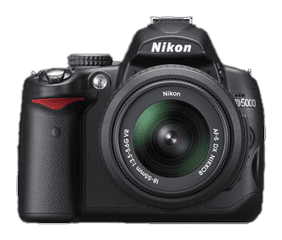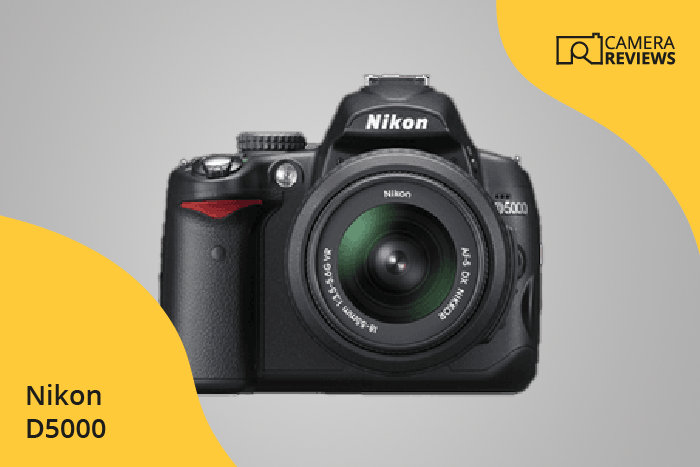Nikon D5000 Specs and Scores

The Nikon D5000, with a score of 41/100, is a DSLR camera that was announced on April 14, 2009, and released the same year. Priced at $730 at launch, this camera measures 127 x 104 x 80mm and weighs 590g or 1.30lbs. When considering the specifications in today’s market, the Nikon D5000 is no longer a top contender, as advancements in technology have led to more advanced and feature-rich cameras. As a result, the Nikon D5000 may not be the best choice for those seeking cutting-edge performance.
Nikon D5000 Overview and Optics
The Nikon D5000 receives an optics score of 45/100. With 12.3 megapixels and a shooting speed of 4 frames per second, it offers decent image quality. The camera has a CMOS sensor, an Expeed processor, and a DXOMARK score of 72. Its sensor size is APS-C, and it uses the Nikon F DX lens mount. However, the D5000 lacks image stabilization, which can affect image sharpness in certain situations.
In the current market, the Nikon D5000’s specifications may not stand out among newer models, as technology has advanced significantly since its release. The absence of image stabilization and a relatively low megapixel count make it less competitive. Despite this, the camera still produces good quality images, and its lens mount allows users to access a wide range of Nikon lenses.
The Nikon D5000 has its limitations, but it remains a viable option for photographers seeking an affordable and reliable camera. Its optics may not be groundbreaking, but it delivers satisfactory image quality and provides access to a vast selection of Nikon lenses.
Nikon D5000 Video Performance
The Nikon D5000 receives a video score of 49 out of 100. This camera offers standard HD video resolution with maximum dimensions of 1280 x 720 pixels. It provides a maximum video frame rate of 24 frames per second (fps), which is a common frame rate for cinematic video. Additionally, the camera has built-in time-lapse functionality, allowing users to create time-lapse videos without the need for external software.
Comparing the Nikon D5000’s video capabilities to current market standards, it falls behind modern cameras that often feature 4K video resolution and higher frame rates. However, the built-in time-lapse functionality remains a useful feature for those interested in time-lapse photography.
While the Nikon D5000’s video capabilities may not compete with newer models, it still provides standard HD video and time-lapse functionality, making it suitable for casual video shooters and time-lapse enthusiasts.
Nikon D5000 Features and Benefits
The Nikon D5000’s feature score stands at 34 out of 100, which may not seem impressive compared to modern cameras. This camera has a 2.7-inch screen with a resolution of 230,000 dots. Unfortunately, it does not offer a touchscreen, flip screen, GPS, WiFi, or Bluetooth capabilities.
Comparing these specifications to today’s market, it becomes evident that the Nikon D5000 falls short in some areas. Many contemporary cameras now come with touchscreens, flip screens, and connectivity options such as WiFi and Bluetooth. These features enhance user experience and facilitate the sharing of images and videos.
Despite its shortcomings, the Nikon D5000 still delivers quality images and videos that may satisfy the needs of those who prioritize performance over additional features. However, for those seeking more advanced features and connectivity options, there are other cameras on the market that may better suit their requirements.
Nikon D5000 Storage and Battery
The Nikon D5000’s storage and battery score stands at 27/100. This camera offers a single memory card slot, compatible with SD and SDHC cards. In today’s market, this may not be sufficient for users seeking more storage options and flexibility.
The D5000’s battery life allows for 510 shots, powered by an EN-EL9a battery type. However, it lacks a USB charging feature. Compared to modern cameras, the battery life and charging options are somewhat limited.
The Nikon D5000’s storage and battery capabilities may not be on par with contemporary models, but they still provide a decent performance for casual photographers.
Nikon D5000 Alternatives
Do you want to know how the Nikon D5000 compares to its competitors? Have a look at the most popular comparisons for this camera below:
- Nikon D3200 vs D5000
- Nikon D500 vs D5000
- Nikon D5000 vs D5300
- Nikon D3500 vs D5000
- Nikon D5000 vs Pentax K-3 Mark III
- Nikon Coolpix P1000 vs D5000
Nikon D5000 FAQ
Does the Nikon D5000 Have Built-in Image Stabilization?
The Nikon D5000 does not have built-in image stabilization. However, it supports lenses with Nikon’s Vibration Reduction (VR) technology to help reduce camera shake and achieve sharper images.
Does the Nikon D5000 Support 4K Video Recording?
No, the Nikon D5000 does not support 4K video recording. Its maximum video resolution is 1280×720 pixels, which is considered Standard HD.
What Size Sensor Does The Nikon D5000 Have?
The Nikon D5000 features an APS-C sized sensor, which is a common sensor size in consumer DSLR cameras. It provides a good balance between image quality and camera size.
Does the Nikon D5000 Have a Dual Memory Card Slot?
The Nikon D5000 does not have a dual memory card slot. It only has a single SD/SDHC card slot for storage.
Does the Nikon D5000 Have a Touch Screen?
No, the Nikon D5000 does not have a touch screen. It features a 2.7-inch vari-angle LCD screen for image preview and menu navigation.
Does the Nikon D5000 Have Wi-Fi and Bluetooth?
The Nikon D5000 does not have built-in Wi-Fi or Bluetooth capabilities. To transfer images wirelessly, you’ll need to use an optional accessory like a wireless mobile adapter.
Does the Nikon D5000 Have GPS?
No, the Nikon D5000 does not have built-in GPS. However, you can use an optional GPS accessory to geotag your photos.
Is the Nikon D5000 Weather Sealed?
The Nikon D5000 is not weather sealed, so it’s not designed to withstand harsh weather conditions. Be cautious when using the camera in rain, snow, or dusty environments.
Does the Nikon D5000 Have a Built-in Flash?
Yes, the Nikon D5000 has a built-in pop-up flash that can be used for additional lighting in low-light situations or as a fill flash to balance exposure.

